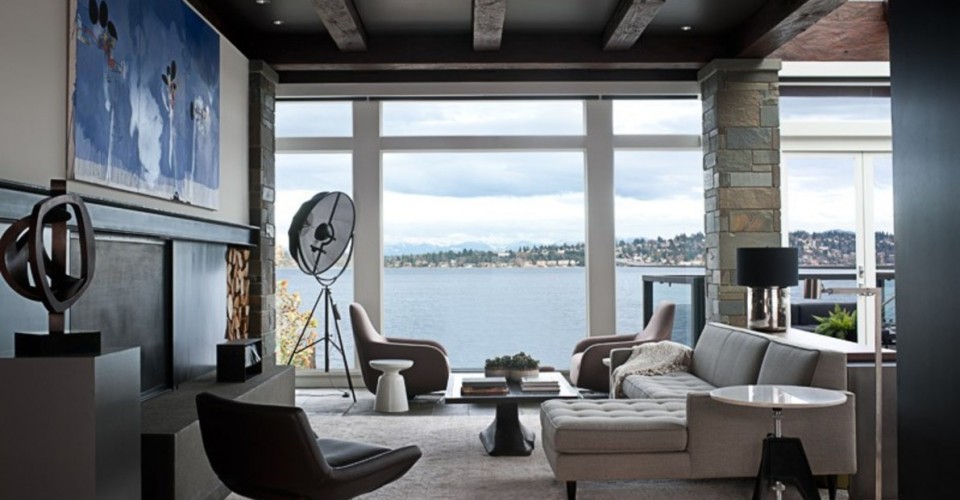How does one deal with electrical cords in a living room when the furniture is in the middle of the space?
This question is a familiar conundrum for many homeowners and apartment dwellers. For some living rooms, it makes the most sense to pull the furniture away from the walls and have the furniture “float.” But what does one do with all of the cords for the lamps and other electronics? No one likes to sit in the dark and even fewer of us like a tripping hazard. Let’s explore some options.
Area rugs
If you have an area rug you can conveniently tuck or hide cords underneath, but since this can also be perceived as a fire hazard, make sure your cords and outlets are new and UL listed. As best you can, run the cord under the rug where it won’t be walked on too much (a bump in the rug can still create a tripping hazard). You may need to move your lamps around, so make sure you can easily retrieve the cord once its hidden.
Furniture
Furniture can do wonders in hiding your cords. You can use self-sticking clips (like Command Clips) to snake cords along table legs or underneath furniture. To maximize your furniture-hiding ability, think about switching outlets or possibly moving your lamp from one side of the couch to the other. In addition to using the furniture you have, consider whether or not another small piece of furniture would help. For example, a console table (the slim table that sits behind a sofa) is a great place to rest lamps and could be a better place to hide your cords.
Outlets in the floor
If putting in an outlet directly in the floor is what you really need, and you think this might improve your home, you may want to invest in this project. Some homeowners feel comfortable installing their own outlets. Personally, I feel it’s best to hire a certified electrician to ensure your outlet is installed up to code. When you call an electrician, be sure you get an in-home consultation so he or she can assess if this is possible and how much time it will take.
Other ideas
- To help eliminate extra cords, try using a cord splitter (like this one) – this is great for plugging in two lamps into one outlet.
- For cords that are still exposed, be sure you weight them down with a rubber cord cover (you can hide that further by applying contact paper, like wood-grain).
- Use baseboard clips or wall clips to affix cords to the wall or floor. It will help hide cords further and help eliminate tripping hazards.
- If you have a lot of cords plugged into one power strip, consider hiding the strip as well. Devices like this BlueLounge Cable Box can greatly help unsightly power strips.
Top image credit: DeForest Architects
When you make a purchase using affiliate links on our site, we may earn a commission.




